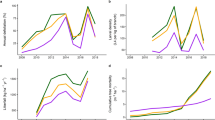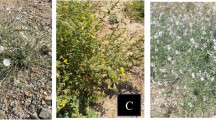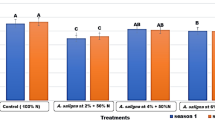Abstract
Background/Question/Methods:
A time series of Lepidoptera larvae (caterpillar) abundance and biomass in the northern hardwood forests of central New Hampshire, USA, shows large interannual fluctuations in aggregated caterpillar biomass (52-fold variation in mg caterpillars/ 8000 leaves) that were spatially correlated across a regional landscape. Primary production of these mature forests has not varied over this period, and many hundreds of Lepidoptera species share comparatively few host plants. Therefore, interannual changes in nutritional quality of even one host plant species may be capable of generating correlated population dynamics for many species in the Lepidoptera community. We tested the hypothesis that variation in soil nutrient availability influences foliar chemistry and ultimately produces a bottom-up force capable influencing the aggregated biomass of the forest's dominant herbivores.
Results/Conclusions:
Over a period of four years, measures of nutritional quality for herbivores in three of the forest's four dominant understory tree species (Acer saccharum, Acer pensylvanicum, and Viburnum alnifolium) displayed considerable variation that was consistent across the landscape. Foliar nitrogen (N) content and two metrics of secondary metabolite concentration—total phenolics and condensed tannin—all varied by up to 20% among years. Resin bag extracts of NH4+, NO2- /NO3- and PO4+ showed soil mineral nutrient availability displayed six-fold variation that was consistent with the pattern in foliar N, and a whole tree in situ fertilization experimental manipulation produced rapid effects on foliar chemistry. Finally, variation in the forewing lengths of free-flying moths showed an interannual concordance among species within the group of early season feeders that was also consistent with patterns in foliar quality—suggesting collections of species experience correlated variations in larval growth performance.
Similar content being viewed by others
Article PDF
Author information
Authors and Affiliations
Corresponding author
Rights and permissions
About this article
Cite this article
Stange, E., Ayres, M. Can the nutrient dynamics of a northern hardwood forest explain variation in its trophic structure?. Nat Prec (2009). https://doi.org/10.1038/npre.2009.3859.1
Received:
Accepted:
Published:
DOI: https://doi.org/10.1038/npre.2009.3859.1



